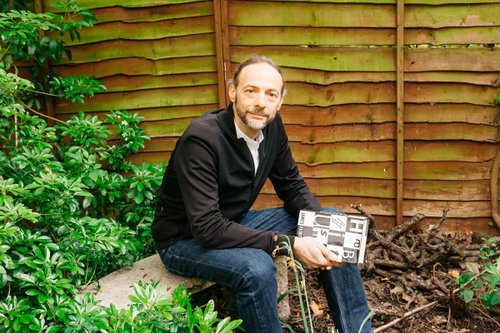Femtech boom: putting women first, in tech and medicine
Mar 06, 2020
5 mins


Technology and lifestyle journalist
Women’s health is a woefully neglected sector—both in terms of medical research and technological advances—at least, until now. A wave of high tech, digital solutions dedicated to women’s health are hitting the market, from period-tracking apps and wireless breast pumps, to wearables for menopause relief. Here, we take a close look at the rise of femtech and what the future holds for this burgeoning industry.
It might be 2020, but the gender health gap is still staggering. Only 2% of publicly funded research in the UK is dedicated solely to reproductive health, despite data suggesting that almost a third of British women will suffer from reproductive or gynaecological health problems during their lifetimes. What’s more, this research is often subject to gender bias. In recent years, researchers have conducted five times as many studies into erectile dysfunction, which affects 19% of men, than premenstrual syndrome, which affects 90% of women.
This was something that Ida Tin, CEO of female health app, Clue, wanted to change when she started her business in 2012 in Berlin. Before long, Clue became known as a revolutionary app. It was in 2016, while attending the startup conference Techcrunch Disrupt in San Francisco that Tin coined the term Femtech. She was shocked and frustrated over the fact that while there were entire areas dedicated to sub-groups such as fintech and cleantech at the event, products that supported female health were scattered around the exhibition hall, “looking lost and out of place”.
“I knew immediately that for these products to be taken seriously, the market needed to be defined, so I suggested that we should begin to call ourselves a femtech company.”
What is Femtech?
Thanks to Tin, Femtech has quickly become an all-encompassing name that defines innovations designed to support, improve and promote women’s health, an area that many would argue has historically been overlooked, especially in such a vastly male-dominated tech scene. In 2019, women were outnumbered three to one in tech, according to TrustRadius. “I knew immediately that for these products to be taken seriously, the market needed to be defined, so I suggested that we should begin to call ourselves a femtech company,” Tin said.
“Names are very powerful tools and by defining femtech—and making the decision to refer to Clue as a femtech company —we legitimised the market and made female health more comfortable to talk about.” This, she said, has helped pave the way for events such as femtech conferences and for venture capital firms to increasingly invest in technologies aimed specifically at women.
Many similar apps and female-focused inventions have emerged alongside Clue, which was founded in 2013. The femtech umbrella has seen an explosion of innovative solutions to women’s health problems. This includes everything from fertility solutions, reproductive healthcare, period and fertility tracking, pregnancy and nursing care, menstruation care goods, women’s sexual wellness products, at-home fertility monitoring devices to general healthcare—all being tackled with new, data-driven solutions.
Take Ava Women, for instance. Its wearable tech bracelet shot to success thanks to its fertility tracking features. The bracelet uses data from a woman’s cycle and temperature to give an overall picture of fertility levels to help couples conceive, with an estimated accuracy of 89%.
How big is Femtech?
Aside from these conventional tech jobs, femtech companies are also seeking medical professionals…
Today, femtech accounts for more than 200 startups worldwide, many of which have been founded and led by women. The industry is opening up the traditionally male-dominated tech job market to female entrepreneurs, developers, coders and makers. Aside from these conventional tech jobs, femtech companies are also seeking medical professionals and those with a background in health sciences, particularly women’s reproductive and sexual health.
…femtech companies have raised more than $220 million since 2011
But it doesn’t stop at jobs. A recent study found that femtech companies have raised more than $220 million since 2011. Tin also estimates that more than $200 billion (£153bn) has been spent on femtech each year ever since.
This digital-health industry has taken the tech world by such a storm that health tech behemoths such as Fitbit and Apple are beginning to wake up to the importance of women’s wellness. Apple’s health-tracking service, HealthKit, is one example. When it was launched in 2014, it didn’t include any women’s reproductive health tracking parametres. However, by June 2019, the company had added a cycle-tracking feature to the same app for iPhone and Apple Watch users.
What do the doctors say?
But really, how useful are femtech products? Just ask the doctors! Medical professionals are now increasingly relying on these cutting-edge innovations to tackle women’s health issues. Dr Shirin Lakhani, from Elite Aesthetics, said that she uses several high-tech devices to help tackle the symptoms of the menopause. One of them is the Emsella chair by BTL Aesthetics to help strengthen pelvic floor muscles and improve bladder control. Another is Ultra Femme 360, which helps to treat menopause symptoms such as laxity and incontinence.
Investing in Femtech
“Investing in, and building, female-led, female-focused tech makes good business sense. It is this realisation, paired with the defining of the femtech space, that has let us see a femtech boom.”
You’ve scored a job with a femtech startup, but are afraid about how secure your job is. Fret not, as the industry attracted an estimated €1 billion in funding in 2019 compared to the previous record of €650 million in 2018. And you are not alone in your interest to solve women’s health issues. Tin thinks that investors are starting to wake up to the fact that femtech covers tools and services that advance all of society, regardless of gender. “Investing in, and building, female-led, female-focused tech makes good business sense,” she said. “It is this realisation, paired with the defining of the femtech space, that has let us see a femtech boom.”
Is Femtech really all it’s cracked up to be?
Many in the industry argue that businesses shouldn’t capitalise on issues related to women’s health. After all, some of those who are founding or investing in femtech startups are male. Menstrual and fertility tracker Glow, for example, was founded by PayPal co-founder Max Levchin alongside four other men, and Flo, the ovulation calendar app was created by two Belarusian brothers, Dmitry and Yuri Gurski.
There have also been reports exposing privacy breaches and how these apps have been exploiting women’s personal data. According to The Wall Street Journal, Flo took advantage of users’ sensitive health information by sharing it with Facebook to create targeted ads.
Tin doesn’t agree that it’s all doom and gloom when it comes to making money from women’s health. “Businesses are finally being built to solve problems and address areas that have historically been overlooked […] and that is no bad thing,” she said. *“I’m pleased that companies are working hard to respond to these demands by developing these products.”
Next in line
Femtech appeals to roughly half of the world’s population and, with time, it will no doubt fulfill the huge economic potential that exists. Data released in March 2018 from Frost & Sullivan suggests that femtech could become a $50 billion (£39bn) industry by 2025.
“It should be in everyone’s interest—across gender, demography and age—that femtech succeeds and improves the lives of women and their loved ones.”
While this is potentially great for business, it’s more importantly a step forward when it comes to improving women’s lives. Lea Von Bidder, CEO and co-founder of Ava, believes the standard of care in women’s health is still “subpar” and that many areas, such as pregnancy, contraception and menopause, “lack modern, adequate and accurate” solutions. “Femtech is trying to address those and improve the standard of care,” said Bidder. “It should be in everyone’s interest—across gender, demography and age—that femtech succeeds and improves the lives of women and their loved ones.”
When it comes to what that will mean for future generations, Bidder is optimistic. “We will see more women-focused companies succeed and prove that women-focused companies can reach significant scale,” she said. “But most importantly, I hope we will eliminate the gender bias in medicine.”
Illustration by Heidi Berton for Welcome To The Jungle
Follow Welcome To The Jungle on Facebook to get your daily dose of our best articles.

More inspiration: Tech for good

How neurotech could boost your performance at work – or endanger your human rights
Neurotech is already being used to monitor workers’ concentration levels and assess their emotional skills...
Jan 17, 2024

‘Silicon Valley isn’t the tech world’s only model of inspiration!’
The short life of software on our phones is as bad for the environment as it is for our wallets. Agnès Crepet shares how she uses tech for good!
Sep 28, 2021

James Flint: from tech journalist to tech for good
As one of the pioneers in tech journalism, James Flint parlayed his extensive experience to create Hospify & champion digital data privacy.
Jun 02, 2021

The only way is up: farmers who grow crops without soil or sun
Vertical farming, hailed as the "future of farming", needs a whole new set of skills never before seen in agriculture. What's behind the hype?
Dec 22, 2020

Taking on tyrants: UK tech workers unionise for better rights for all
Everything you need to know about the United Tech and Allied Workers Union (UTAW), UK's latest tech workers' union.
Dec 09, 2020
The newsletter that does the job
Want to keep up with the latest articles? Twice a week you can receive stories, jobs, and tips in your inbox.

Looking for your next job?
Over 200,000 people have found a job with Welcome to the Jungle.
Explore jobs